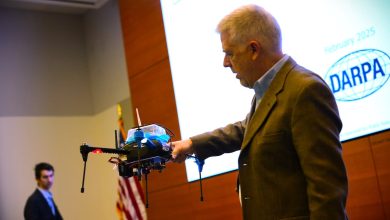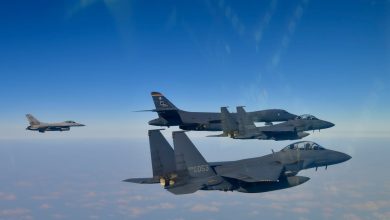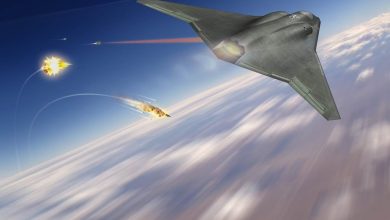Army Stinger missile replacement competition heads into flight tests

RTX and Lockheed Martin are heading into flight tests this year in a head-to-head competition to develop a replacement for the U.S. Army’s Stinger missile.
The Army is pursuing a Stinger missile replacement for short-range air defense that can go faster, survive jamming and more easily hit tougher targets like drones.
The service awarded RTX and Lockheed Martin with contracts to competitively develop the Stinger replacement in September 2023. The RTX-manufactured Stinger missiles are currently used in the Army’s interim Maneuver-Short Range Air Defense, or MSHORAD, system and also in a man-portable configuration to provide air defense.
The Army has long planned to pursue a next-generation interceptor for short-range air defense, but the effort has become paramount as Stinger missiles were sent to Ukraine in response to Russia’s invasion of the country.
The service no longer builds new Stinger missiles, but it refurbishes old ones. To replenish its own stockpile, the Army would like to replace the old missiles with new ones.
RTX announced it had completed 10 subsystem demonstrations of its Next-Generation Short-Range Interceptor, or NGSRI, offering successfully in a statement Tuesday.
“These successful subsystem demonstrations are a crucial step in meeting the U.S. Army’s range and performance requirements for this transformational short-range air defense capability,” Tom Laliberty, the company’s president of land & air defense systems, said in the statement. “We are confident in our ability to rapidly deliver the Army an affordable, low-risk, highly producible NGSRI solution.”
Subsystem tests included demonstrating that its advanced seeker’s range exceeded that of the current Stinger in laboratory environments and outdoors. The company also proved its flight rocket motor could extend intercept range in engagements.
The new system also demonstrated greater range in detecting and identifying aerial targets, even in low-visibility environments and, in arena testing, the new Stinger’s warhead showed “precise and repeatable lethality” against a broad range of threat targets, according to the statement.
Other demonstrations “addressed critical missile functions including tracking, guidance, aerodynamic control, fuzing and safety,” the statement notes.
The new missiles will now head to U.S. soldiers and Marines for a touchpoint exercise where they will provide feedback, the company said. A system flight demonstration is also expected to happen later this year, according to the statement.
Lockheed Martin told Defense News that since it was awarded a contract to develop a Stinger replacement, it has conducted two soldier touchpoints, “both of which resulted in positive feedback from the warfighters present,” Randy Crites, vice president of advanced programs for Lockheed Martin’s missiles and fire control business, said.
Lockheed is preparing for multiple flight tests this year.
“Our solution brings performance improvements to mounted and dismounted MSHORAD operations and provides dismounted soldiers and marines a capability that rivals the mounted platform,” Crites said.
Overall, the Stinger competition is expected to take five years to develop and qualify the new interceptor and move into low-rate production, Maj. Gen. Frank Lozano, who runs Program Executive Office Missiles and Space, told Defense News in late 2023 shortly after contracts had been awarded.
In the first two years, each of the two companies will develop missiles and then build a “very small quantity” of them, he said. Then, at the end of the period, the service will have a “fly-off,” Lozano added.
If both missiles perform well, the Army will carry both vendors into the second phase of the rapid prototyping effort. During that phase, the Army will ask the teams to tweak and improve the missiles and build another round of prototypes. The competitors would then go through another fly-off round.
After that, the service would select one vendor to move into production.
Of course, Lozano said, the Army plans to be flexible.
“If one vendor does very well and the second vendor does very poorly, then we have that decision there at the end of the two-year time period to off-ramp one of the vendors and just proceed with a single vendor for the final three years of the program,” Lozano said. “We’d really not prefer to do that; we really want to keep that competition as long as possible.”
Jen Judson is an award-winning journalist covering land warfare for Defense News. She has also worked for Politico and Inside Defense. She holds a Master of Science degree in journalism from Boston University and a Bachelor of Arts degree from Kenyon College.
Read the full article here






